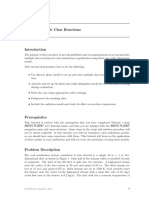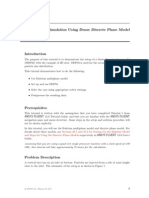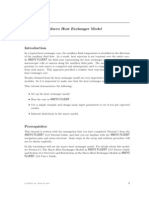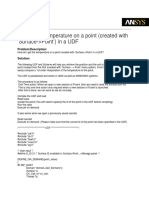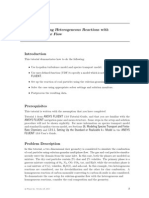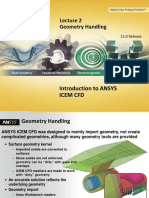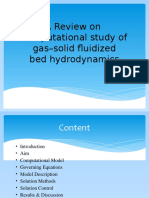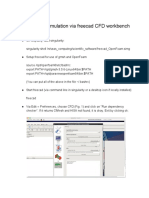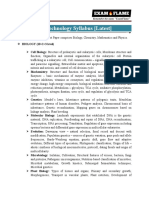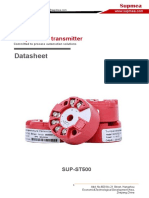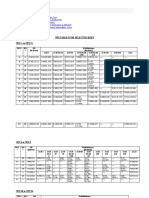100% found this document useful (1 vote)
269 views3 pagesFDP - Ansys Fluent Tutorial
This document summarizes the steps to simulate gas-solid flow in a turbulent fluidized bed using ANSYS FLUENT. It describes setting up the geometry and mesh for a 1m by 0.28m bed. It then outlines configuring the k-epsilon turbulence model, multiphase Eulerian model with air and glass beads, boundary conditions, and solution methods. The results include plots of instantaneous and time-averaged solid volume fraction contours that characterize the fluidized bed behavior.
Uploaded by
MONA MARYCopyright
© © All Rights Reserved
We take content rights seriously. If you suspect this is your content, claim it here.
Available Formats
Download as DOCX, PDF, TXT or read online on Scribd
100% found this document useful (1 vote)
269 views3 pagesFDP - Ansys Fluent Tutorial
This document summarizes the steps to simulate gas-solid flow in a turbulent fluidized bed using ANSYS FLUENT. It describes setting up the geometry and mesh for a 1m by 0.28m bed. It then outlines configuring the k-epsilon turbulence model, multiphase Eulerian model with air and glass beads, boundary conditions, and solution methods. The results include plots of instantaneous and time-averaged solid volume fraction contours that characterize the fluidized bed behavior.
Uploaded by
MONA MARYCopyright
© © All Rights Reserved
We take content rights seriously. If you suspect this is your content, claim it here.
Available Formats
Download as DOCX, PDF, TXT or read online on Scribd
/ 3





